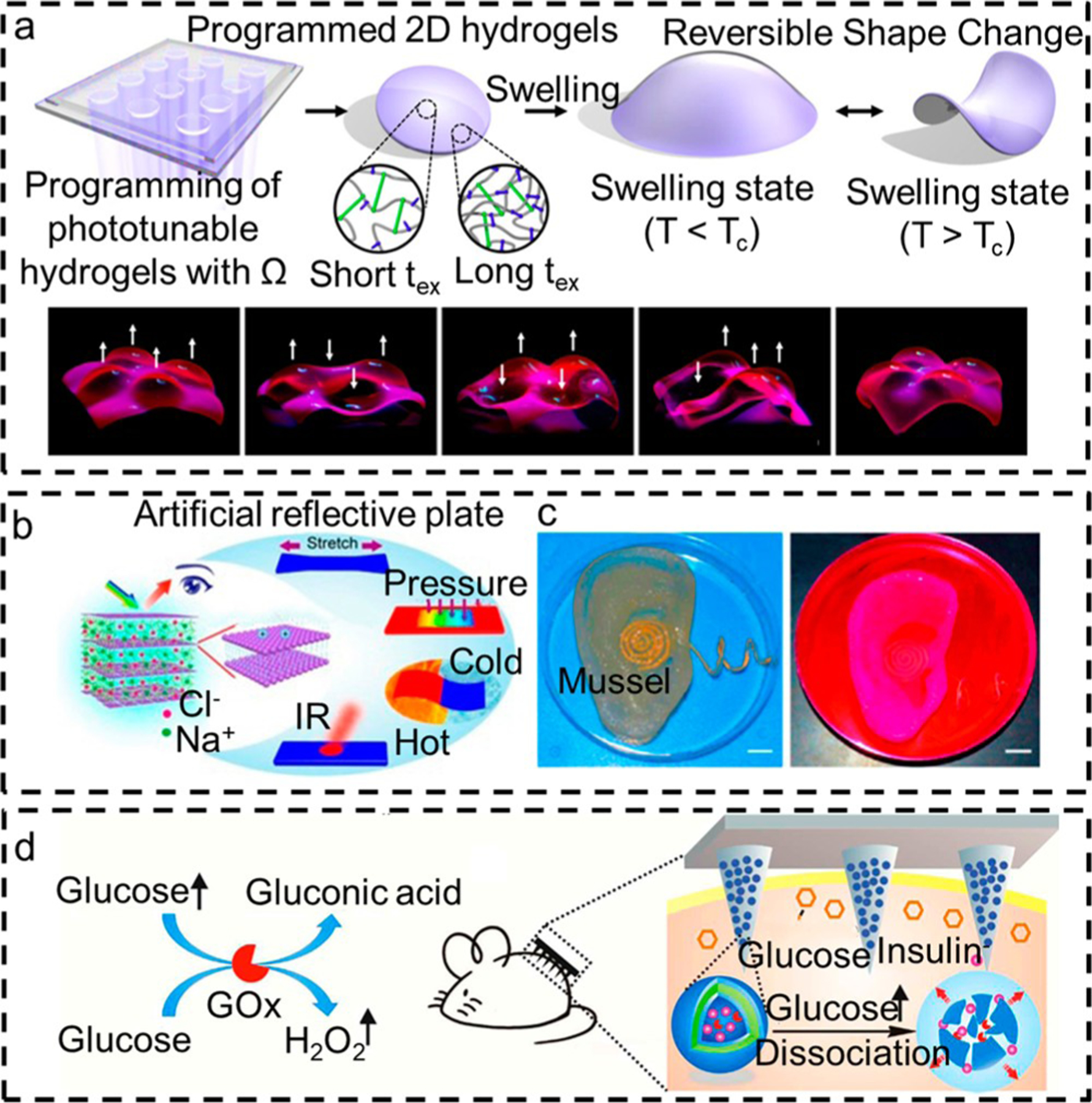Figure 4.

Represented hydrogel sensor with different signal readouts. (a) Hydrogel with programmed morphologies and motions which is realized by temporal control of polymerization and cross-linking reactions. Reproduced with permission from ref 121. Copyright 2018 Nature Publishing Group. (b) Photonic hydrogel skin can respond to multiple stimuli, including tension, pressure, and temperature, into an optical readout. Reproduced with permission from ref 122. Copyright 2021 American Chemical Society. (c) Hydrogel sensors with auditory abilities. The sound signal can be converted into a readable electrical signal by the hydrogel ear. Reproduced with permission from ref 123. Copyright 2013 American Chemical Society. (d) Hydrogel sensors with controllable and insulin release ability. Reproduced with permission from ref 124. Copyright 2017 American Chemical Society.
